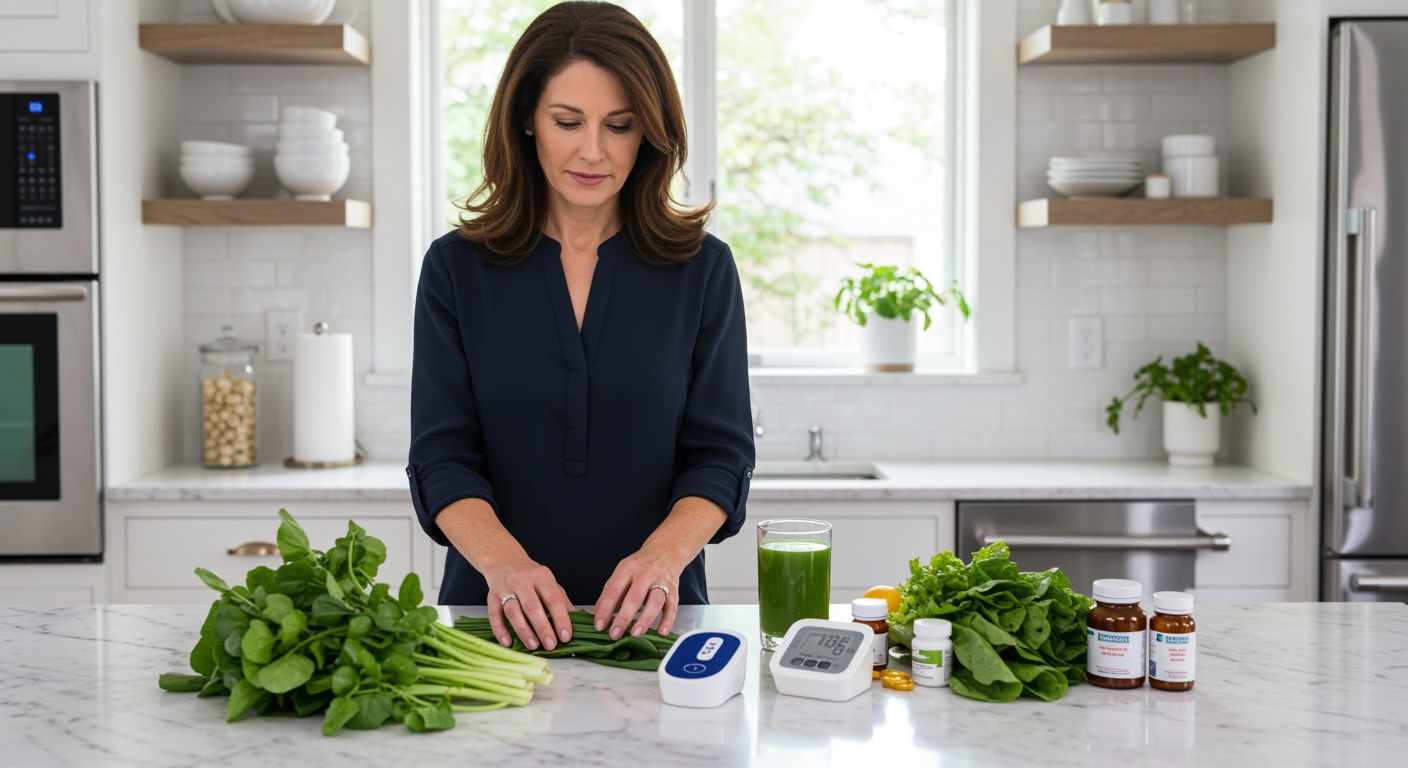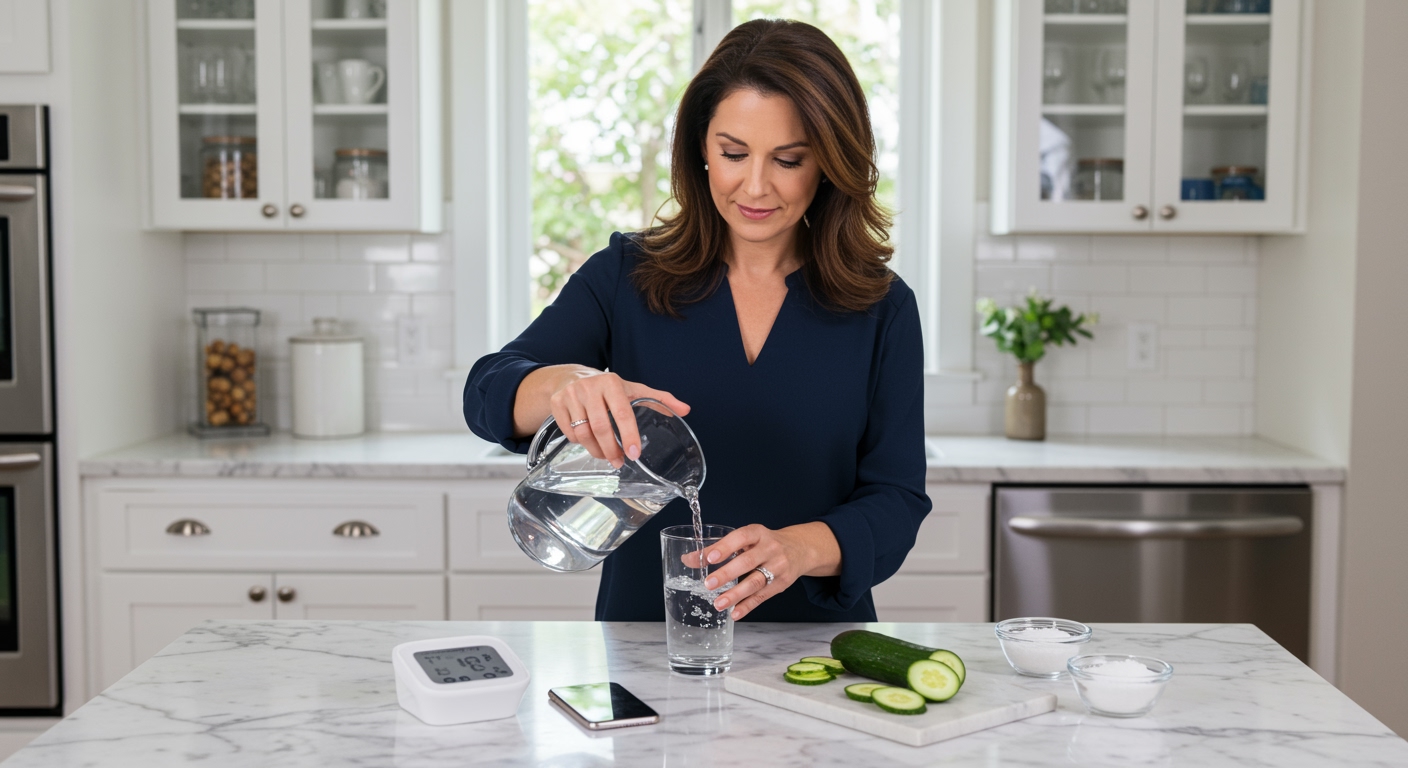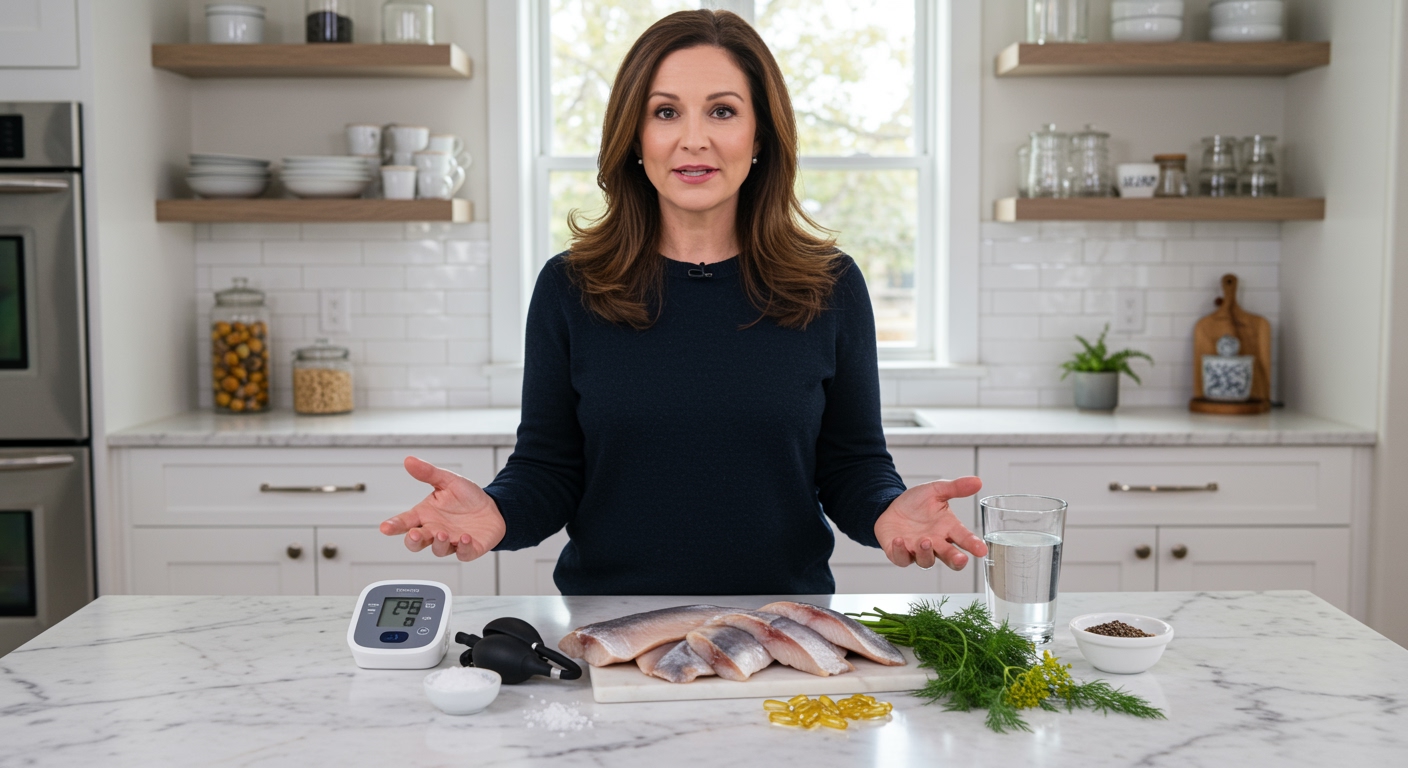✪ Key Takeaway: Watercress may worsen low blood pressure symptoms due to its natural compounds that can further reduce blood pressure levels.
Introduction
You grab a handful of fresh watercress from the grocery store, thinking you are making a healthy choice for your salad.
But what if this innocent leafy green could actually make your low blood pressure symptoms worse and leave you feeling dizzy, weak, or fatigued throughout the day.
Hi, I am Abdur, your nutrition coach and today I am going to explain how watercress affects blood pressure and whether you should avoid it if you have hypotension.
What Makes Watercress A Blood Pressure Concern?
Watercress contains several bioactive compounds that can influence your cardiovascular system in ways you might not expect.
This peppery green is packed with nitrates, which your body converts into nitric oxide through a complex biochemical process.
Nitric oxide acts as a powerful vasodilator, meaning it relaxes and widens your blood vessels.
When your blood vessels dilate, the pressure inside them naturally decreases because the same amount of blood now has more space to flow through.
For people with normal or high blood pressure, this effect can be beneficial and help improve circulation.
However, if you already have low blood pressure, this additional vasodilation could push your numbers even lower and trigger uncomfortable symptoms.
✪ Fact: Watercress contains more nitrates per serving than many other leafy greens including spinach and arugula.
How Does Your Body React To Low Blood Pressure?
Low blood pressure, medically known as hypotension, occurs when your blood pressure readings consistently fall below 90/60 mmHg.
When your blood pressure drops too low, your organs and tissues do not receive adequate oxygen and nutrients through your bloodstream.
Your brain is particularly sensitive to these changes because it requires a constant supply of oxygenated blood to function properly.
This is why the most common symptoms of low blood pressure include dizziness, lightheadedness, and feeling faint when you stand up quickly.
Other symptoms can include fatigue, nausea, difficulty concentrating, and in severe cases, fainting or shock.
When you consume foods like watercress that can further lower blood pressure, you may experience an intensification of these already uncomfortable symptoms.
✪ Note: Orthostatic hypotension affects up to 20 percent of adults over age 65 and can be worsened by dietary factors.
What Other Compounds In Watercress Affect Blood Pressure?
Beyond nitrates, watercress contains potassium, a mineral that plays a crucial role in blood pressure regulation.
Potassium works by counteracting the effects of sodium in your body and helping your kidneys excrete excess fluid.
This process reduces the volume of blood circulating through your vessels, which can lead to lower blood pressure readings.
Watercress also contains natural antioxidants like vitamin C and phenolic compounds that can improve blood vessel flexibility.
More flexible blood vessels respond more readily to vasodilating signals, potentially amplifying the blood pressure lowering effects.
The combination of these compounds creates a synergistic effect that could be problematic for individuals who already struggle with hypotension.
✪ Pro Tip: Monitor your blood pressure for several days after eating watercress to track any changes in your readings.
Should You Completely Avoid Watercress With Low Blood Pressure?
The answer is not necessarily a complete avoidance, but rather a cautious approach based on your individual circumstances.
If you have mild hypotension without symptoms, small amounts of watercress may not cause significant problems.
However, if you frequently experience dizziness, fatigue, or fainting spells, it would be wise to limit or avoid watercress until your blood pressure stabilizes.
The timing of consumption also matters because the blood pressure lowering effects are typically most pronounced within 2-4 hours after eating nitrate-rich foods.
If you choose to include watercress in your diet, start with very small portions and eat it alongside foods that may help stabilize blood pressure.
Always consult with your healthcare provider before making significant dietary changes, especially if you take medications for blood pressure or have other cardiovascular conditions.
✪ Note: Keep a food and symptom diary to identify patterns between watercress consumption and hypotension episodes.
The Bottom Line
Watercress can indeed worsen low blood pressure symptoms due to its high nitrate content and other blood pressure lowering compounds.
When dealing with hypotension, every food choice becomes a health decision that deserves careful consideration.
I would love to hear about your experiences with watercress and blood pressure in the comments below, and please share any questions you might have about managing hypotension through dietary choices.
References
At NutritionCrown, we use quality and credible sources to ensure our content is accurate and trustworthy. Below are the sources referenced in creating this article:
- The Watercress Company: Cardio Vascular Health and Reducing Hypertension
- Lybrate: Benefits of Watercress and Its Side Effects
- Healthline: Watercress Benefits
- Dr. Nesochi: Watercress Health Benefits





